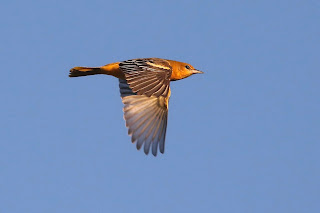Blue Jays have been storming the hawkwatch recently, with over 13,000 jays having been counted in the past week! The flight began to really pick up for these birds around the 24th, dazzling the many visitors we've been getting since then.
As is the way in the natural world, we aren't the only ones who have noticed the jay flight - Cooper's Hawks have taken notice as well. Today, we had a Cooper's (or perhaps several) ambush the feeders - where the jays have been hanging out en masse - no less than seven times! One of those times, I thought I noticed that it was a Sharp-shinned Hawk doing the ambushing, which surprised me slightly given their more diminutive size. Interestingly, when I mentioned this to Harry Armistead and Karl, both described that they've seen Sharpies "playing" with the jays, almost as if both parties know that this smaller accipiter is unlikely to actually get a Blue Jay, but hey, it sure is fun trying (well, at least for the Sharpie…).
One reason we could be seeing high numbers of jays this year has to do - as migration always does - with food. The Winter Finch Forecast for this season notes that several varieties of nut crops - upon which Blue Jays partially depend - are not doing so well in parts of the east. Blue Jays can be irruptive migrators if their food supply is lacking, which may be what we are now witnessing.
At least for the hungry Cooper's and the guests who have been repeatedly wowed by the huge groups of Blue Jays flying over, this appears to be a good thing!
Until next time,
Bridgett


























